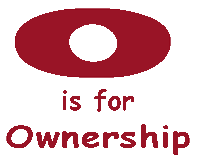|
|
|
|
Legal Protection for your Brand Elements
Trademark
"A trademark is a distinctive phrase, word, logo, or other graphics that serve to identify the source of a product, and to distinguish that product from competing products in the marketplace. Examples of trademarks include FORD®, IBM®, VELCRO®, FORMICA®, "Have it your way®", and "Fly the Friendly Skies®." Each of these well-known marks calls to mind a particular company and their distinctive products."
"A strong trademark is a mark that is distinctive because the words or graphics are creative or out of the ordinary. For example, unique logos, made up words (Exxon), words that are surprising in their context (Diesel fashions), words that are suggestive without being literally descriptive (Slenderella) qualify for strong trademarks. On the other hand, people's names (Ray's Pizza), descriptive terms (Quality automotive), and locations (New York motorcycles) are not considered to be inherently distinctive, leading to weak trademarks or no marks at all."
"Trademarks are obtained by applying to the U.S. Patent and Trademark Office (www.uspto.gov). Be sure to seek the advice of qualified counsel before applying for your mark. For the best protection create something unique, apply for your trademark, and use the mark to build your brand."
Top of page
Copyright
Copyright is a form of protection provided by the laws of the United States to the authors of “original works of authorship,” including literary, dramatic, musical, artistic, and certain other intellectual works. This protection is available to both published and unpublished works.
Copyright protects "original works of authorship" that are fixed in a tangible form of expression. The fixation need not be directly perceptible so long as it may be communicated with the aid of a machine or device. Copyrightable works include the following categories:
- literary works;
- musical works, including any accompanying words
- dramatic works, including any accompanying music
- pantomimes and choreographic works
- pictorial, graphic, and sculptural works
- motion pictures and other audiovisual work
- sound recordings
- architectural works
These categories should be viewed broadly. For example, computer programs and most "compilations" may be registered as "literary works"; maps and architectural plans may be registered as "pictorial, graphic, and sculptural works."
No publication or registration or other action in the Copyright Office is required to secure copyright. Copyright is secured automatically when the work is created, and a work is "created" when it is fixed in a copy or audiorecorded for the first time. There are, however, certain advantages to registration. For more information go to: http://www.copyright.gov
Top of page
Patent
Patents are used to protect inventions. A patent consists of a description of the invention and claims of its capabilities and applications of the specific invention. It's best to have a patent drafted by an intellectual property or patent attorney who understands how the process works. For more information about filing a patent, call the U.S. Patent & Trademark Office (800) 786-9199 or visit the USPTO website: http://www.uspto.gov/main/patents.htm
Copyrights protects original artistic, literary, dramatic, musical and other intellectual property works, including compilations such as multimedia works and computer programs and websites. You cannot copyright an idea! What you can claim copyright in is your original expression of an idea that is written down. You cannot copyright names, titles or short phrases. You can indicate "ownership" on an image, artwork, web site or document by putting a notice "Copyright (year) by (your legal name)" in a visible spot. You can also file legal documents with the U.S. Copyright Office.
Top of page
Type of Imagery
Fine Art
Fine art is typically created for its aesthetic or artistic value. As such, it is usually not copyrighted, not trademarked, and not protected. Images of fine arts have widespread use, especially as a means of awareness — of either the artist or the art itself.
Work for Hire
As a rule, work for hire is protected because someone has explicitly paid for its creation. That creation is commercially motivated — either as a personal or business asset. Oddly though, the rules here for illustration and photography differ. Illustration follows the rules of commission work — whoever paid that commission fee owns the source artwork. With photography, the photographer (a.k.a. the artist), not the buyer, owns the image source.
Copyrighted Images
Some images already carry copyright statements with them. They may even carry trademarks. Logos, merchandised images (like Snoopy or Mickey Mouse), and professional photography are examples of such work for hire.
Public Domain
When an image is used without copyright or trademark, or that copyright is not renewed, it can slip into the public domain. Equally important, when a copyright or trademark is not protected even though it is up to date, and the image is in widespread use by anyone, it may also be considered in the public domain. This establishes precedent that anytime in the future, anyone can use the image without permission.
Clip Art
Between copyrighted images and public domain lies clip art. Clip art is copyrighted but those rights are frequently unenforced. Why? Perhaps because the business interests of its owners are best served by widespread product use and by interesting potential buyers in buying the product.
Top of page
If you need help doing this, contact AbuLLard. He'll be glad to help!



